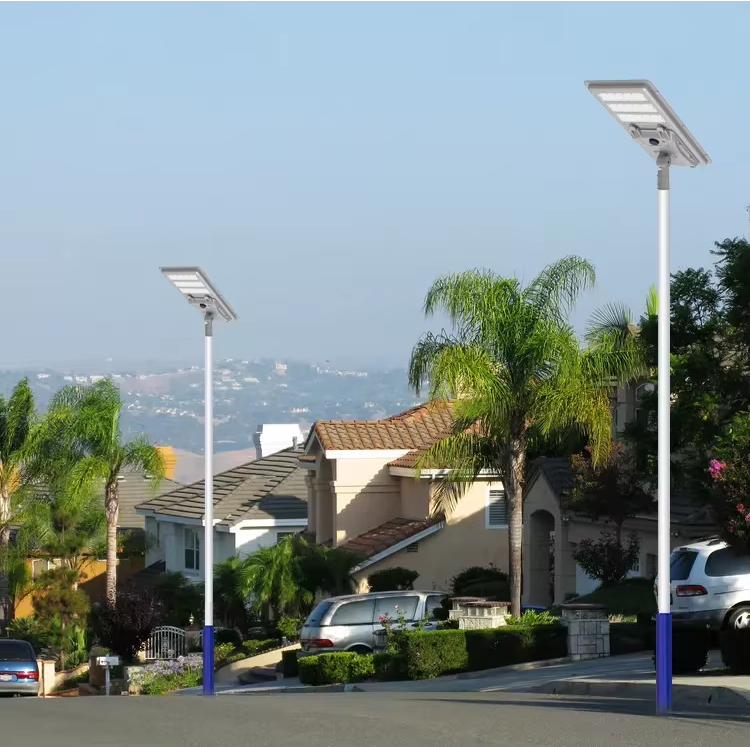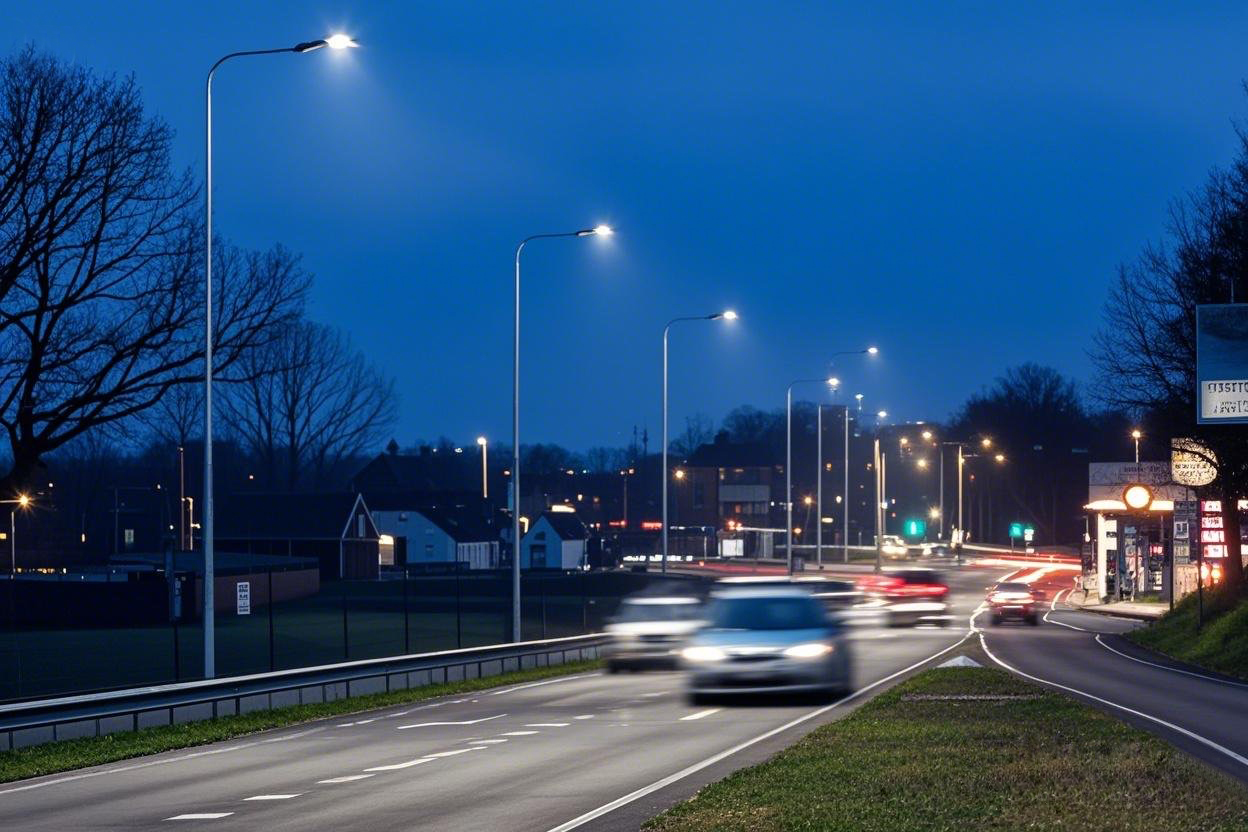
Solar Street Light Installation Pitfall Guide: Three Key Factors Affecting Lifespan
With the rise of smart cities and green energy, solar street lights have become a vital choice for road lighting, park illumination, and infrastructure in remote areas. However, many projects experience premature failure, insufficient brightness, or complete lamp breakdown. The root cause often lies in overlooking key factors during installation. Below, we analyze three critical elements that determine the service life of solar street lights and provide practical recommendations to help buyers, contractors, and project managers avoid costly mistakes.
1. Sunlight Conditions and Installation Location: Adequate Sunlight Is the Foundation for Longevity
1.1 Sunlight Duration and Shading Issues
The efficiency of solar panels depends on sufficient sunlight. If the installation site is shaded by tall buildings, trees, or billboards for long periods, the panels will not generate enough power. This leads to chronic undercharging of the battery, significantly shortening its lifespan.
Professional Tips:
-
Use sunlight simulation tools (e.g., Google Earth or solar path analysis software) to assess annual sunlight angles.
-
Ensure the solar panel faces the optimal direction (usually southward or toward the equator) and adjust the tilt angle based on local latitude (±5°).
-
Avoid low-power panels in densely built-up areas, under tree canopies, or in regions with frequent smog.
1.2 Mounting Angle and Bracket Stability
Improper panel angles reduce charging efficiency and may cause damage during storms or heavy rain.
Professional Tips:
-
Choose corrosion-resistant brackets rated to withstand winds of ≥12 on the Beaufort scale.
-
Use reinforced concrete foundations for brackets, with anchor bolts embedded to standard depth.
-
Inspect screws and brackets regularly, especially after typhoons or severe storms.
2. Battery and Control System: Storage and Management Are the Core of Lifespan
2.1 Battery Type Selection
The two main options are LiFePO₄ (lithium iron phosphate) batteries and gel lead-acid batteries. LiFePO₄ batteries provide over 2,000 charge cycles, superior heat resistance, and are ideal for hot or desert climates. Lead-acid batteries are cheaper but bulkier and less reliable in cold environments.
Pitfall Avoidance Tips:
-
For high-temperature areas (e.g., the Middle East or Africa), choose LiFePO₄.
-
In cold climates (e.g., North America or Europe in winter), ensure the battery’s discharge curve and heating protection meet requirements.
-
Match battery capacity to load power, with reserve energy for 3–5 days of cloudy weather.
2.2 Controller Protection and Intelligent Management
The controller handles light control, time control, and overcharge/over-discharge protection—it is the “brain” of the lamp. Low-quality controllers can fail quickly in high-temperature or humid environments.
Professional Tips:
-
Choose controllers with IP65 or higher protection ratings and MPPT charging algorithms.
-
Ensure overcurrent, short-circuit, and over-temperature protection features, ideally with remote monitoring capability.
-
Mount controllers in a ventilated, waterproof, and dustproof location during installation.
3. Lamp Pole and Structural Safety: Stable Support Ensures Reliability
3.1 Pole Material and Anti-Corrosion Treatment
Streetlight poles are exposed to weather and salt spray for years. Poor-quality coatings or thin walls can lead to rusting or breakage.
Professional Tips:
-
Use Q235/Q345 carbon steel or aluminum alloy poles with hot-dip galvanization and electrostatic powder coating.
-
Ensure pole thickness meets standards (for common 6–8 m poles, ≥3 mm wall thickness).
-
In coastal or humid regions, apply enhanced anti-corrosion coatings and schedule regular inspections.
3.2 Foundation Design and Wind Resistance
Unstable foundations are a major cause of leaning or collapsed poles.
Professional Tips:
-
Design foundation size according to local wind speeds and soil conditions, typically with 1–1.5 m deep concrete footings.
-
After installation, verify the pole’s verticality; allowable deviation ≤1.5%.
-
For large-scale projects, consider third-party structural safety testing.
4. Additional Installation Details and Maintenance Tips
-
Cabling and Waterproofing: Use waterproof connectors or heat-shrink tubing at joints to prevent water ingress.
-
Lightning and Surge Protection: In lightning-prone areas, install lightning rods and surge protectors on the pole or battery box.
-
Regular Inspections and Cleaning: Clean solar panels every 6–12 months, check controller settings, and measure battery voltage.
-
Installer Training: Ensure installation teams follow product manuals and local standards to avoid wiring errors or loose fasteners.
5. Conclusion: Quality Products + Proper Installation = Long Lifespan
The lifespan of solar street lights depends not only on factory quality but also on installation details and environmental conditions. Three key factors stand out:
-
Sunlight conditions determine whether the battery can fully charge.
-
Storage and control systems directly impact consistent lighting and protection.
-
Lamp pole and foundation stability ensure structural safety and weather resistance.
For buyers, contractors, and government project managers, proper site planning, strict adherence to installation standards, and regular maintenance are essential strategies to avoid wasted budgets and frequent replacements. By following these professional recommendations, your solar street light project will achieve a longer service life and a lower total cost of ownership.

